Simple, Cheap and Fast, All At Once
One of the smarter and increasing more influential people in the tri bike world wrote to me last week: "I often think that all tri bikes other than the P2/P3 and PR3/5 should be done away with.”
The models he was writing about were those made by Cervelo and Quintana Roo and not the highest end bikes these companies make. Why did he write this? He amplified his statement with a diatribe against, "making my wrenching life difficult despite not being faster, smoother, better fitting or lighter.” I got the sense he wrote this while taking a break from building up a superbike.
We’re going to look at two models mentioned, Cervelo’s P2 and Quintana Roo’s PR3, with specific interest in why these bikes are industry leading. What is it they do well?
First, the price. Cervelo’s P2 is a $2,800 bike and QR’s PR3 costs $2,500. This is pretty much entry-level, which is to say, you can buy bikes cheaper than this but if you want everything in a bike you need, not including accessories like race wheels and tires, the specific saddle that works for you and so forth, these bikes check all the boxes.
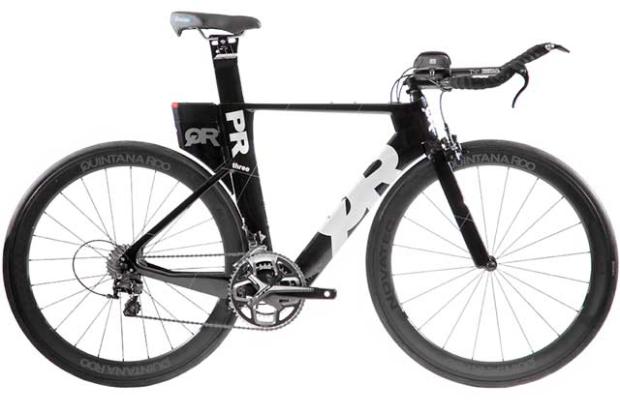
Second, the bikes are fast. Versions of the P2 frame hold course records at Wildflower and elsewhere and rarely would that frame underneath a good rider cause that good rider to lose a race versus the superbike he might be riding. As for QR's PR3, the underlying frame liberally borrowed from the best ideas in bike design (like Trek’s rear Speed Box). Wedded with its “Shift” technology (routing air past the “dirty" parts of the bike) this frame silhouette is always in the aerodynamic hunt.
Third, they fit. Both of them fit. Now, they don’t call themselves by the same size, which is important, and I promise you that most retailers and even more consumers – including those who sell and own these bikes – don’t understand this and mistakes happen as a result. Frame size, for the purpose of fit, is best identified by that frame’s “stack” and “reach”, which are the rise and run from the bottom bracket to the head tube top. There is a size of Cervelo’s P2 that has a stack and reach of 540mm and 425mm respectively. There is a size of Quintana Roo’s PR3 that is identical. But the P2 in that size is called 56cm and the PR3 in that size is called 54cm. This is why you shouldn’t buy a bike based on what its size is called; rather on the actual measured stack and reach.
In case you think this size-name-snafu is a rare aberration, Trek’s Speed Concept in size L is also 540mm x 425mm, as is Dimond’s Marquise in size M.
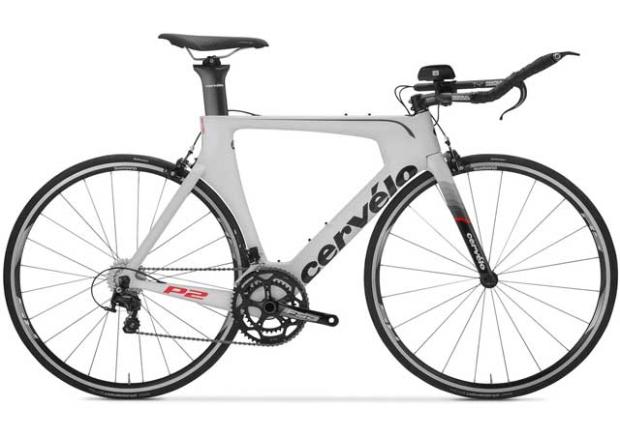
There are several decisions made by the product managers at Cervelo and QR that conspire to make these two bikes fit very well. Of course they are geometrically well conceived. The frames I mean. Second – and this is important – these companies don’t try to make their own aerobars, and they don’t spec aerobars without thinking hard about the aerobars they’re about to spec. They don’t think about aerobars like they think about headset bearings or front hubs or other commodity items they might be able to save a buck on. If you want an aerobar that adjusts high, and rearward, and forward, and narrow, and wide, and does so with comfort and strength, reliability and stability, and that adjusts easily and quickly, and with extensions that are ergonomic, the list of bars you can safely spec is pathetically small (after all these years that aerobars have been around). Both these bikes are spec’d with Profile T3 or T4 aerobars and what’s important here are the brackets (J4) and the Pads (F35).
Before I get too effusive in my praise, these companies spec’d an older version of the Profile’s T4 and what I hope is that they’re moving over as PD is moving over. Below are old and new clamps and armrests. What’s on the left is new; what’s on the right is old. See, on the right, the armrest is clamped to the extension? We’re not doing that anymore. I’m going to give both QR and Cervelo (and every other company) a little time to shift their inventories over, and I’ll allow PD some time to offer newer pads and brackets with aluminum extensions. But as we move into 2018 I’ll get ornerier and ornerier if entry level bikes aren’t spec’d with these new PD brackets all the down to entry level; or they need to be spec’ind Zipp’s new aerobars; or if they make their own aerobars they need to be at least as good as the bars made by these companies.
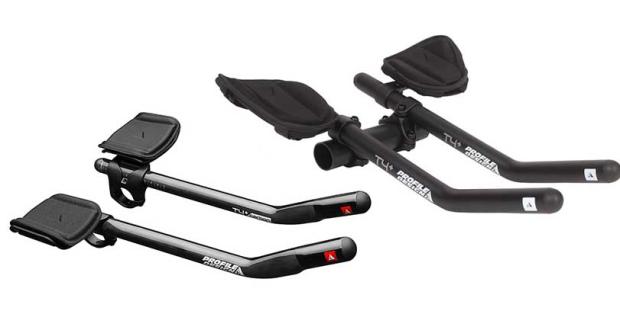
Bear in mind that even Cervelo is capable of screwing the pooch. Its P3 is the same frame as the P2, but uses a 3T Vola aerobar which is neither as thematic a fit as the Profile Design (by “thematic” I mean the bar itself, by virtue of its pad position, fits a bit long on a bike that is appropriately sized, making the entire bike fit a bit long), nor is it as adjustable. I often tell people just to buy a P2 because it fits better than the P3, even though the P3 sits higher on the food chain.
Profile Design has just upgraded to a new bracket (J5) and armrest (F40 or F40tt), but the slightly older (J4 and F35) brackets and pads are still world leading. The new Zipp aerobars are also now in the small fraternity of bars that hit all the right marks. Frankly speaking, however, some bike companies just feel that aerobars are a component they can make, and they can save money on. What we end up with, often, is a very narrow fit range. Look at the fit range of the aerobar Giant places on its Trinity Advanced Pro.
The final reason these bikes fit well is that they are made to be used with a standard stem, which means you can change the stem to any length and any pitch any stem company makes. Yes, there are 6 stems for the Trek Speed Concept but that's rare for superbikes. There are 2 available stems for the Felt IA. Many or most superbikes only offer 1 stem option.
So, to recap, the bikes fit because the frame is soundly designed and properly scaled throughout its size run; you can place any stem on it you want; and the aerobar spec’d is very adjustable, stable and comfortable. Also, the aerobar is a thematic match for the frame and what I mean is, if you build a tall frame you shouldn’t place a tall aerobar on it (Specialized has often been guilty of this). Cannondale, the last time they made a Slice (pre disc brake), it was a great bike in every way – great value! – and would’ve made this article, except somebody had a brain fade and spec'd a Visiontech bar that was designed when Calvin Coolidge was president. I can just imagine the wheels buzzing in the product manager’s head, and I wouldn’t be surprised if the inner dialogue went something like: “I can save $150 at retail by buying this dead Visiontech inventory!” That aerobar was unadjustable, which is why nobody spec’d it!
And this brings us back to the original comment by my bike industry friend. I’m building up two superbikes right now in my workshop. It’s taken days to build each, because I’m building each from the frame up and they each have their – how to put this nicely – idiosyncracies. I don’t mind this process because I have the time, it’s a hobby of mine, and I like to see what it looks like when companies try to improve on an already fairly mature product type. But what about you? Do you have the time? And the tools? And the interest? QR’s PR3 can be entirely built, unbuilt, rebuilt, with 2 sizes of Allen wrench. You can add or subtract 10mm of aerobar pad height in a few minutes with the PR3 or the P2. You can’t do that with a Speed Concept or a P5.
Just realize that mortal bikes like the PR3 and P2 have an awful lot going for them. Like Giro’s new, space-aged, hyper-adjustable cycling shoe technology (otherwise known as the “shoelace"), and Amazon’s new local pick-up adjunct to its online ordering process (otherwise known as the “store”), sometimes old ideas have surprisingly robust utility.


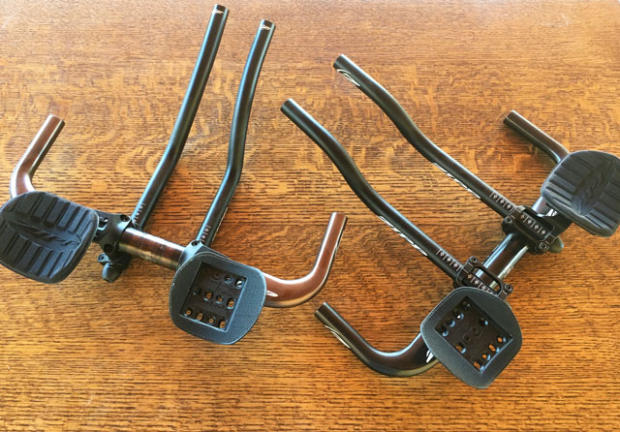
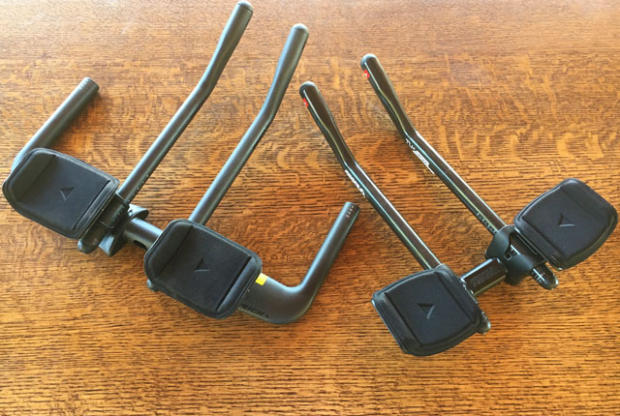
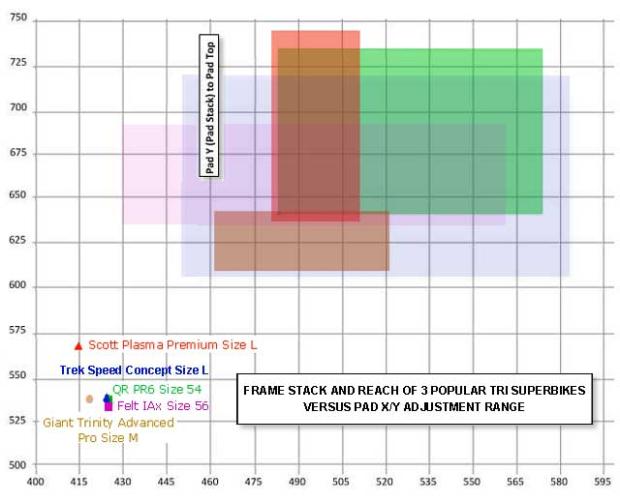
Start the discussion at slowtwitch.northend.network